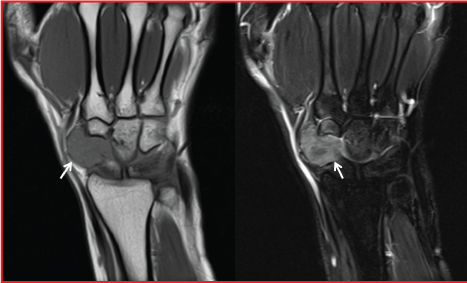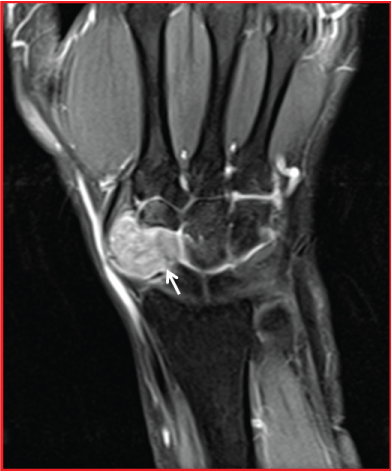Giant cell tumor, Tendon sheath, Wrist, MRI
A 21-year-old woman was admitted to our department due to left wrist pain and swelling. Magnetic resonance imaging showed a T1W hypointense, T2W heterogeneously hyperintense mass in the medial aspect of her left wrist, encasing the pollicis tendons (Figure 1). The lesion was shown heterogeneous contrast enhancement (Figure 2). The patient was operated and the lesion was proved to be giant cell tumor of the tendon sheath histopathologically.
The giant cell tumor of the tendon sheath is a benign and uncommon lesion arising from the synovium of a bursa, joint or tendon sheath [1]. Uncertain etiology involves inflammation, trauma, toxin, allergy, clonal chromosomal abnormalities and aneuploidy [2]. The giant cell tumor of the tendon sheath frequently presents as a firm, slow growing, multilobular, non-tender mass located adjacent to the tendon [3]. These lesisons typically exhibits small, scattered foci of low signal on T1WIs and T2 WIs due to the presence of hemosiderin. However, the tumor may exhibit variability in signal intensity on MR images [1]. MRI is currently the optimal modality for preoperative assessment of tumor size, extent and invasion of adjacent joint and tenosynovial space.
None.
None.

Figure 1: T1 weighted images shows hypointense and T2 weighted images shows heterogeneously hyperintense mass in the medial aspect of her left wrist (white arrows).

Figure 2: Intravenous contrast injection with fat sat T1 weighted image shows strongly enhancement of the lesion.